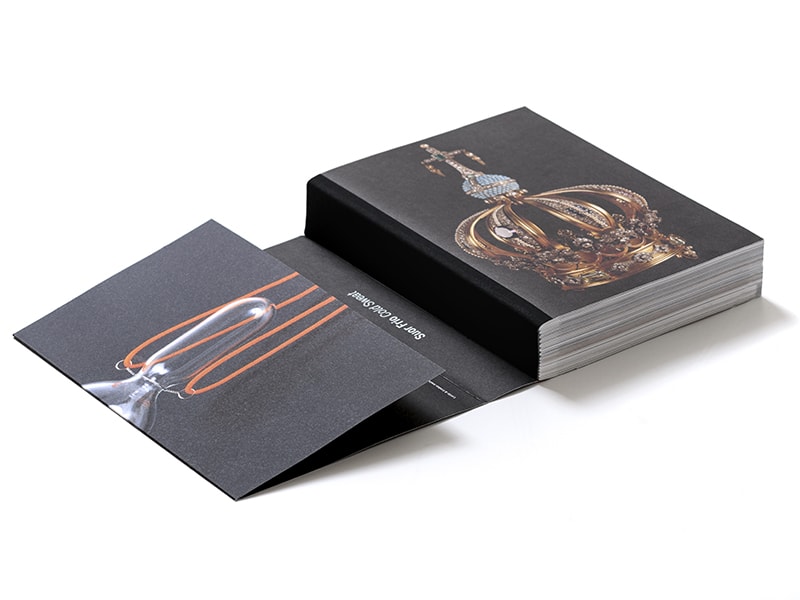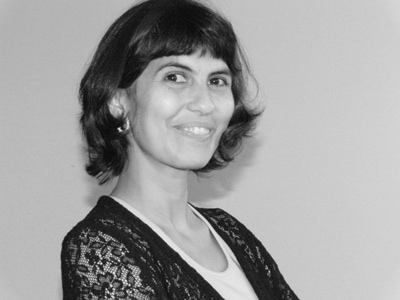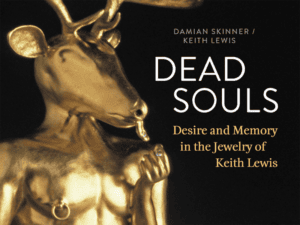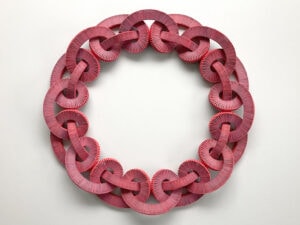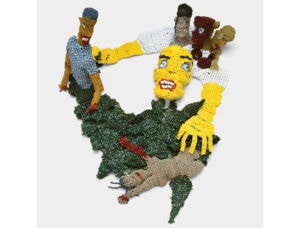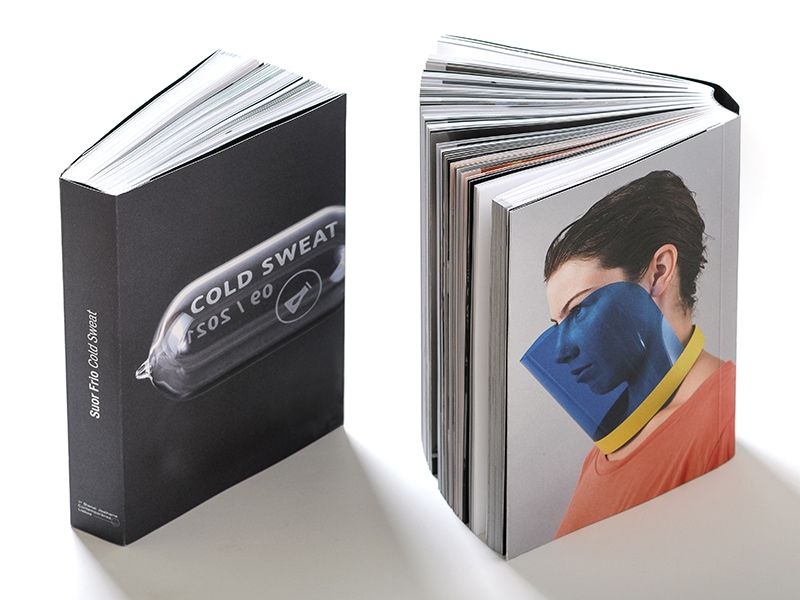
Cristina Filipe, ed. Cold Sweat Suor Frio: 1st Lisbon Contemporary Jewellery Biennial. Lisbon: PIN – Associação Portuguesa de Joalharia Contemporânea/Santa Casa da Misericórdia de Lisboa – Museu de São Roque/Câmara Municipal Lisboa, MUDE – Museu do Design e da Moda, Coleção Francisco Capelo/Universidade Católica Portuguesa, School of Arts, CITAR- Research Centre for Science and Technology of the Arts, 2022.
In contemporary jewelry, where the dominant form of publication continues to be the self-congratulating artist’s monograph, a book like Cold Sweat Suor Frio offers a welcome opportunity to think about jewelry as a complex social phenomenon beyond the maker’s perspective. This publication is the printed legacy of the 1st Lisbon Contemporary Jewelry Biennial, a public event that included exhibitions, colloquia, and masterclasses in various venues across Lisbon (September 16–November 20, 2021). It brought together 268 participants from 24 nationalities, including artists, gallerists, writers, educators, and collectors.
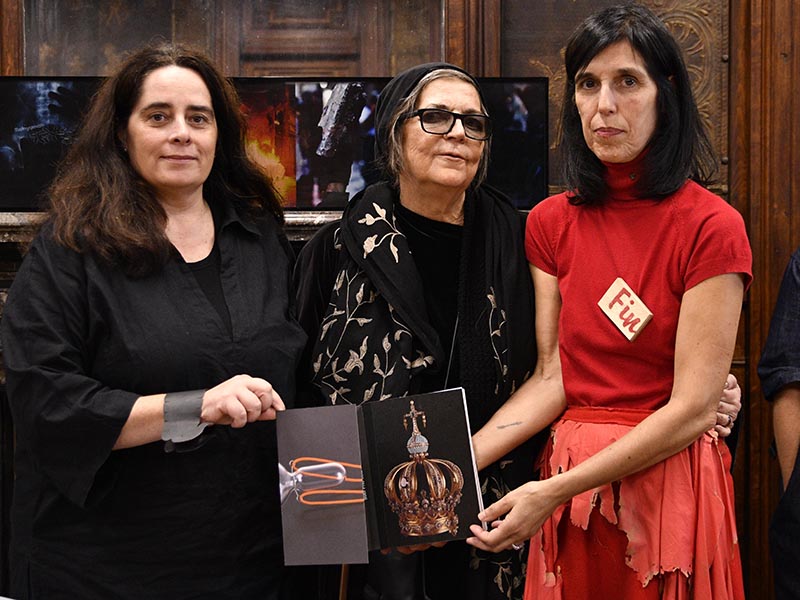
The publication immediately engages the reader with the Biennial’s theme, cold sweat. This uncomfortable feeling of physical and spiritual vulnerability reigned in the wake of the 2020 pandemic’s outbreak. Cristina Filipe, president of PIN – Portuguese Association for Contemporary Jewelry until January 28, 2023, served as the general curator of the biennial, and was also responsible for the concept of the book and its editorial coordination. The thematic core of the Biennial and its resulting book bears Filipe’s hallmark attitude toward jewelry, which places contemporary artistic practice in transhistorical and transcultural dialogues with other artefacts. Books recall other books, and I cannot help but establish a relationship with the exhibition catalog Mais Perto—Closer, which she curated with Marilia Maria Mira and Paula Paour in 2005. The exhibition brought contemporary jewelry in dialogue with the collections of the National Museum of Ancient Art in Lisbon as part of the Ars Ornata Europeana international jewelry conference. Filipe and a group of like-minded jewelers founded PIN to organize that event.
With the present publication and handing over of PIN’s presidency to Marta Costa Reis, Filipe seems to close a circle. The publication bears witness to PIN’s long-standing collaborations with Portuguese cultural stakeholders, listing an impressive number of museum and academic institutions, galleries, artists, and media coverage partnerships.
The Cold Sweat publication accomplishes several roles at once. It documents the title exhibition in its various locations. It showcases stunning works of contemporary jewelry and historical artefacts. It gathers the papers given at the colloquia. And, finally, it is a precious object, carefully designed and lavishly illustrated.

In practical terms, the book is divided into two parts: the exhibitions and the colloquia.
The book as a walkable space
The book’s first part walks the reader through the multi-site exhibition Cold Sweat Suor Frio, curated by Cristina Filipe and the Jesuit priest João Norton de Matos SJ, deployed across four venues: the Church of São Roque, its museum and temporary exhibitions gallery, and the Museu da Farmácia. Each chapter documents a location and is introduced by the curatorial text. These introductions take the reader by the hand on a detailed and evocative tour through the exhibition rooms, revealing the inspiration behind the dialogues established between artistic works and historical artifacts, such as foundling tokens from the Misericordia House, relics, amulets from non-Western traditions, or pharmaceutical substances.

The texts also share details about curatorial decisions, interpret contemporary works, or take the reader behind the scenes to explain technical challenges that were met, for example, when designing the display for the Precious Crown of Our Lady of Fatima, which seemed to float in the void. Full-page portraits of some participating artists wearing their work surprise the reader like an apparition. They pose quietly, photographed like Baroque holy figures against a dark background.
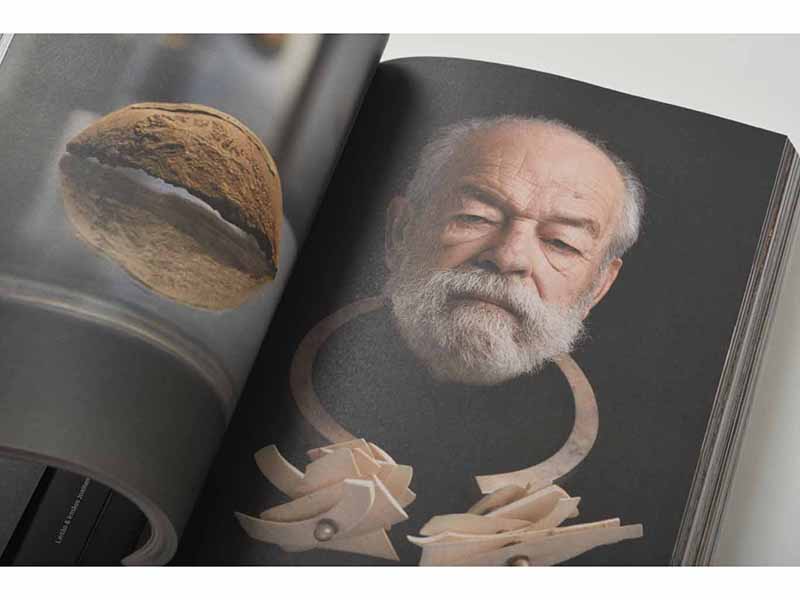
This aesthetic is intentional and supports the Biennial’s quest to explore the seldom-explored intersection between design and religion, art, and spirituality. The generous graphic layout indulges in the documentation of the superb settings of the exhibitions, be they golden altars and ornamented marble walls or white-cube installations.
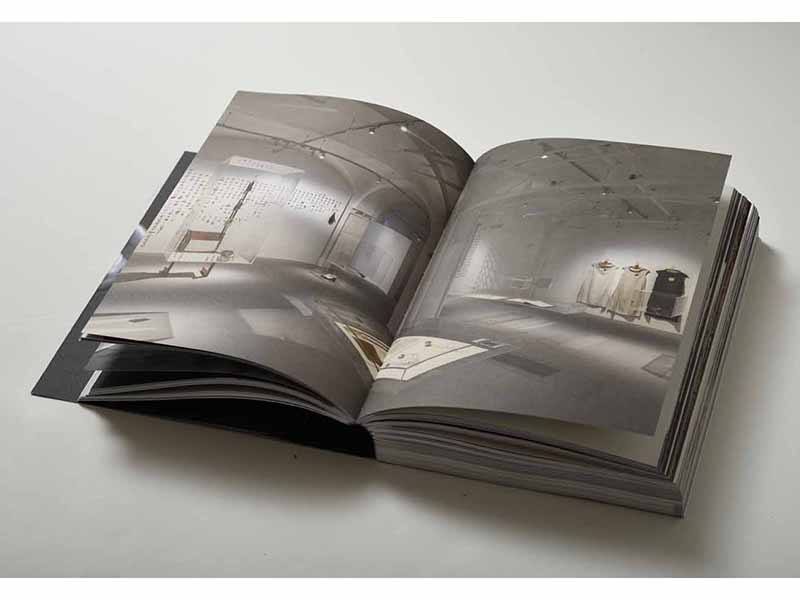
With Eduardo Sousa Ribeiro’s excellent photography, the atmosphere of the exhibitions becomes breathable, capturing the public’s fleeting interactions with the works. At the same time, close-ups of the jewelry pieces allow concentrated observation as they seem to leap off the page. The specific jewelry perspective of this publication counters the prejudices against ornament, emotion, and belief that modern legacies continue to perpetuate in the context of educational institutions, museum collections, or publications.
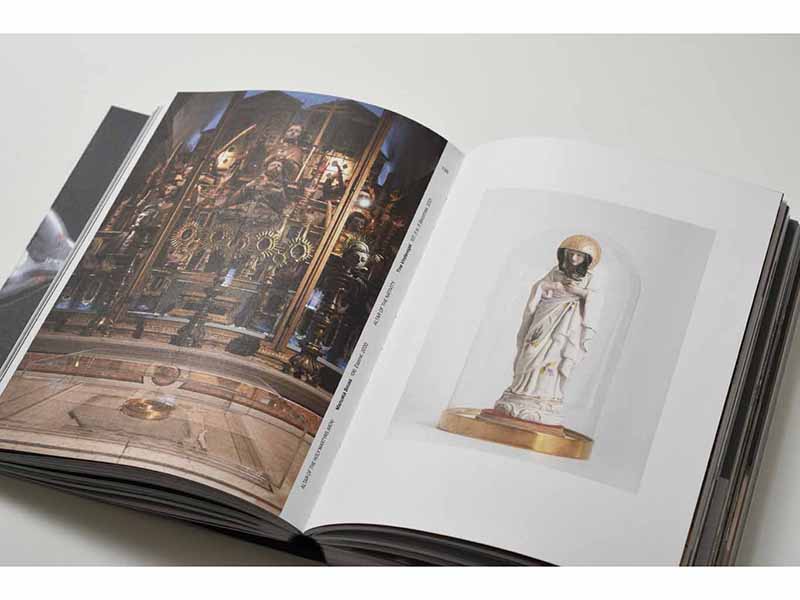
The list with the technical details of about 220 contemporary works by 72 international artists from different disciplines—mostly jewelry, but also photography, sculpture, design, film, and performance—becomes a valuable tool for future referencing. Even though sometimes it is difficult to find the correlation between the illustration number, page location, and object information, the extra effort is worth investing in. An eagle eye is needed, and also some pressing and pulling, to dig up some image captions that are tucked almost into the book’s gutter.
Documenting the Biennial as a moving target
Acting as a hinge between the exhibition and the colloquia section, the Biennial’s program is documented in the center pages of the publication. There, each event (be it a show, masterclass, colloquium, or other kind of event) is represented by a fact sheet and headed by a thumbnail image of the flyer, banner, or website used for its communication. I like to believe that the exhibition checklist from the publication Shows and Tales: On Jewelry Exhibition-Making (AJF, 2015) might have contributed to raising awareness about the importance of documenting exhibitions more systematically.
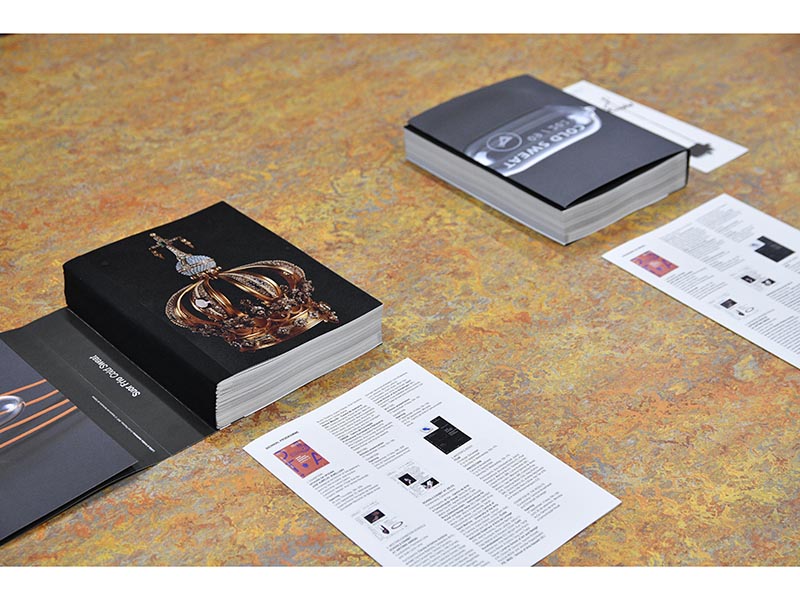
Yet it would have been a treat if these few pages had recorded the biennial’s program more visually. Borrowing one single page from somewhere else (there are 448 pages to choose from) would have allowed the editors to include some images showing the Biennial’s atmosphere outdoors: the crowd that formed outside the Museo de San Roque to attend the inaugural speech; the gatherings during the openings in other locations; some impressions of the masterclass workshops; a view of the Jewelry Room, where international galleries had their stands; or the Biennial’s solid presence in the public space, from street banners to lightboxes in the subway station.
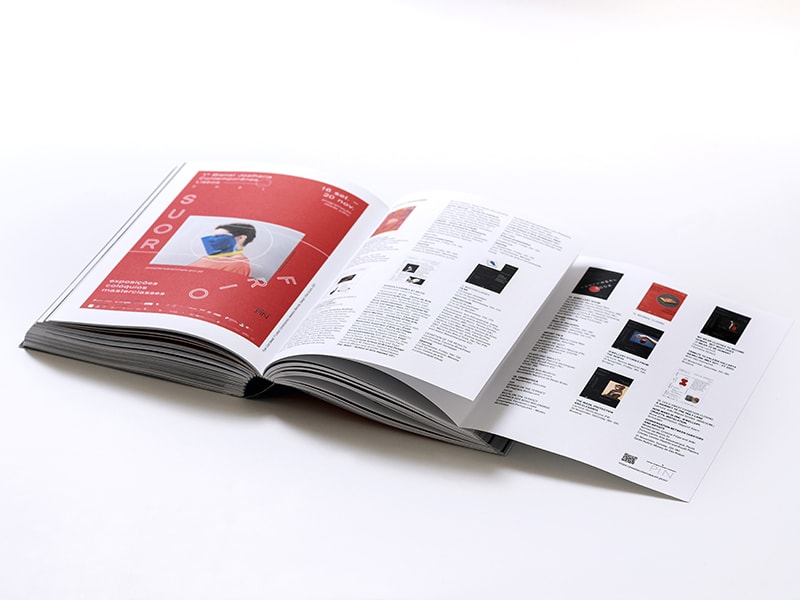
Contemporary jewelry in transhistorical perspective
The book’s second part gathers a collection of 13 papers, held during the two colloquia and a closing lecture. The format follows that of academic proceedings, providing an abstract and keywords to introduce each article. The invited authors come from various disciplines, including art history, philosophy, theology, gemology, and anthropology. The papers from the first colloquium reflected on the biennial themes, Body, Fear, and Protection, from a perspective of contemporary art practices and addressed the conditions of production and use of jewelry, past and present. Readers will be familiar with the works put under scrutiny, such as Liesbeth den Besten’s analysis of Lauren Kalman’s work.
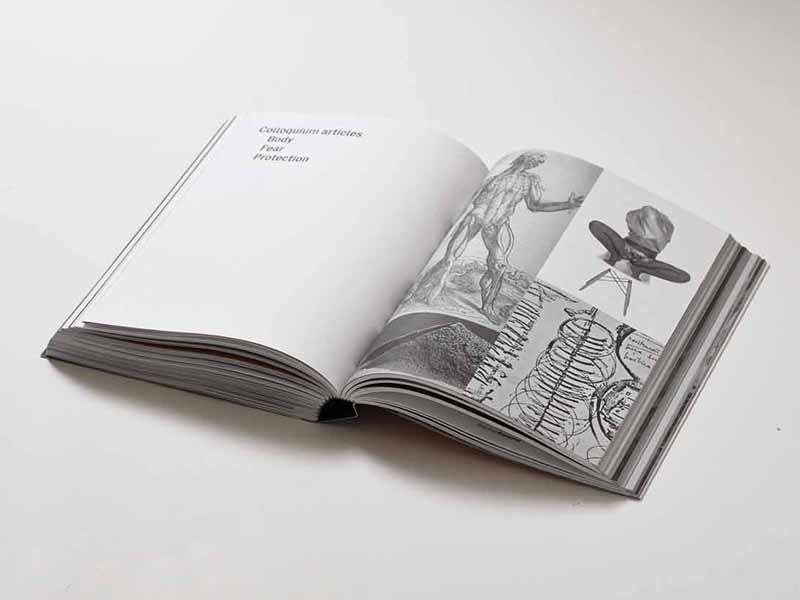
The same readers might feel challenged when encountering the papers from the second colloquium, “Precious Crown.” There, the three gathered essays elaborate on devotional jewelry and religious goldsmithing. Due to their specificity and in some cases dryness, they might not be everyone’s cup of tea. At the same time I appreciated the braveness of publishing them within a contemporary jewelry publication, inviting the specialized community to overcome their often miopic self-referentiality and be curious about other periods and practices. The astonishing story of the Precious Crown of Our Lady of Fatima displayed in the Cold Sweat exhibition is a case in point.
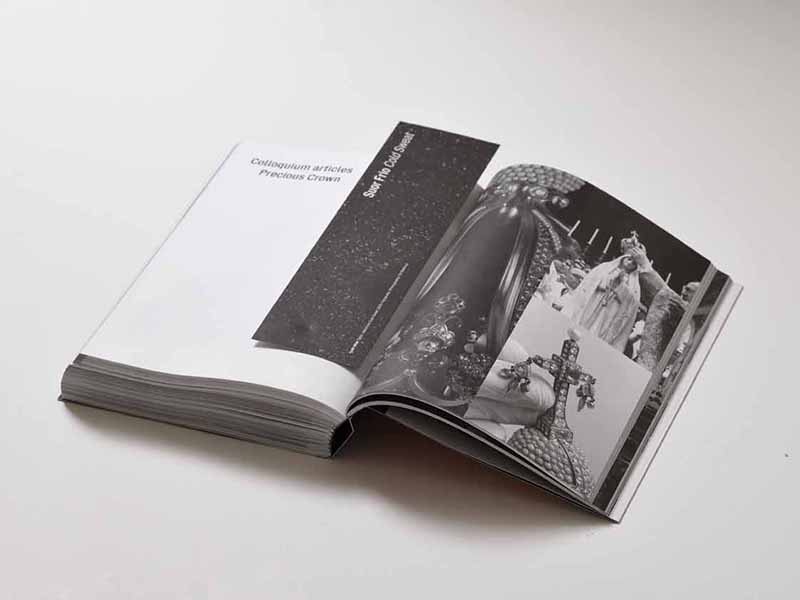
This crown was made of precious metals and gems sourced from jewelry that Portuguese women gifted to the church, hoping that their offering to the Virgin Mary would protect their sons from joining the second world war, in the 1940s. This is how a community provided the material resources to craft a precious object in order to express a political message. Today we would call it craftivism. In 1981 a correlation was made between the miraculous apparition of Our Lady of Fatima and Pope John II’s survival after an assassination attempt on his life. The projectile removed from the Pope’s body was integrated into the crown as if it were one more precious gem. Body, fear, and protection melt together in this anecdote and show that conceptualism and the use of the “objet trouvé” are not exclusive to the contemporary jewelry field.
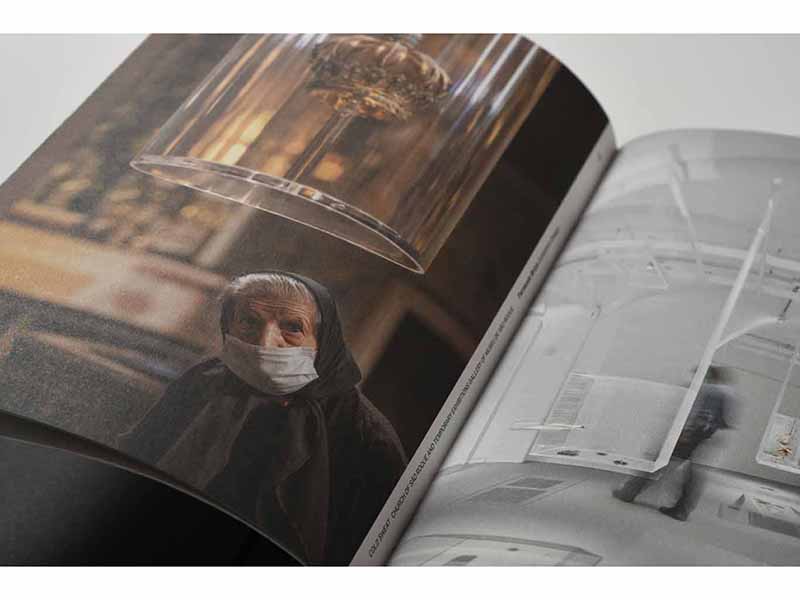
Launching the book
Since its publication in November 2022, PIN has organized several events to launch the book. The most meaningful and emotionally loaded presentation was the first one, which took place on November 5, 2022, at Brotéria’s Sala dos Couros, in Lisbon.

Next to representatives of all participating institutions, Kadri Mälk (who died not long after) traveled to Lisbon to personally present the book. Professor Emeritus of the Estonian Academy of Arts in Tallinn, Mälk was in many ways attached to Portugal. The title of the Biennial, Cold Sweat Suor Frio, was inspired by the frightening experience that Filipe and Mälk, two close friends, shared in Munich during Schmuck 2020. That meeting came abruptly to an end as everyone was urged to return to their respective countries, just hours before the start of the lockdown, in an atmosphere of fear and uncertainty.
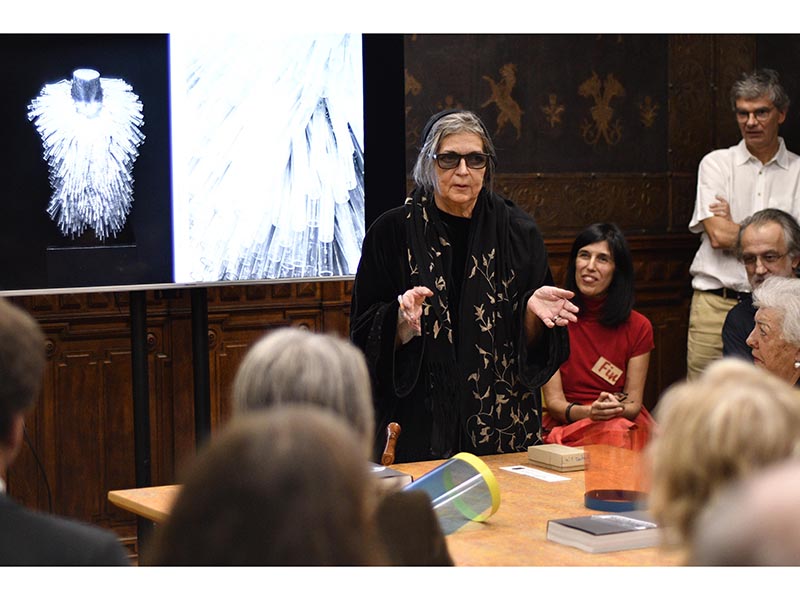
The most recent book presentation took place in Munich during Jewelry Week 2023, where everything began. A Cold Sweat Ampoule, to be worn on the body and made by Christoph Zellweger in a limited edition, accompanied the book’s launch there. It features the book’s cover and is available for sale.
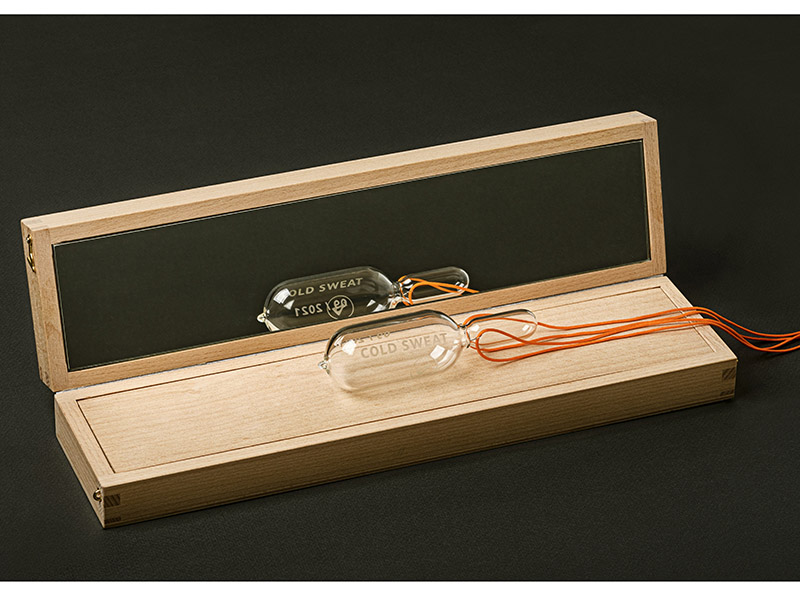
Why documenting exhibitions matters
This beautifully crafted publication has documented the 1st Lisbon Contemporary Jewelry Biennial. Curating exhibitions is an effective medium for creating discourse in contemporary jewelry and for physically building plural jewelry histories. That’s why documenting exhibitions becomes so crucial. With its conceptual rigor, aesthetic power, and interdisciplinary approach, this book makes a valuable contribution to the professional field as much as the academic one. The book encourages further research about what it means to be human today and proves that jewelry is a powerful medium to think about survival and belief in uncertain times.
